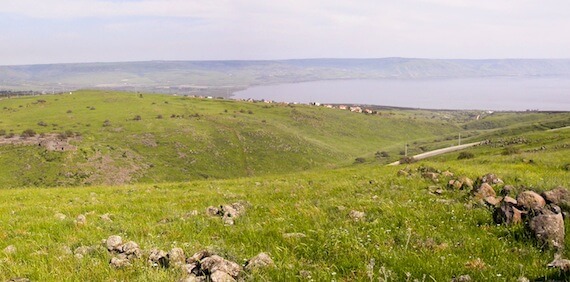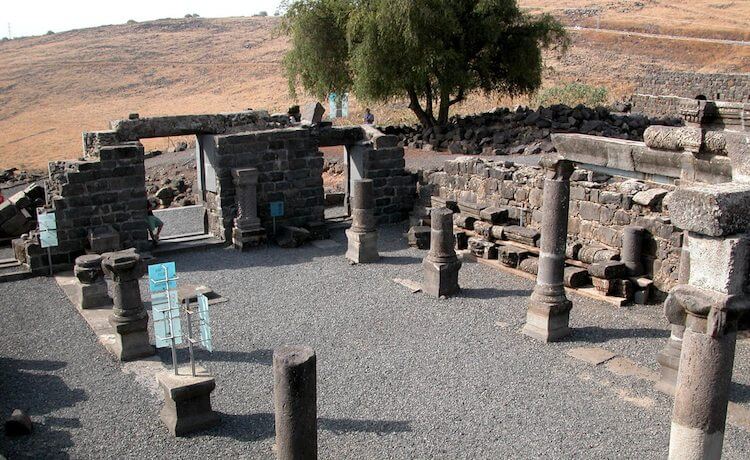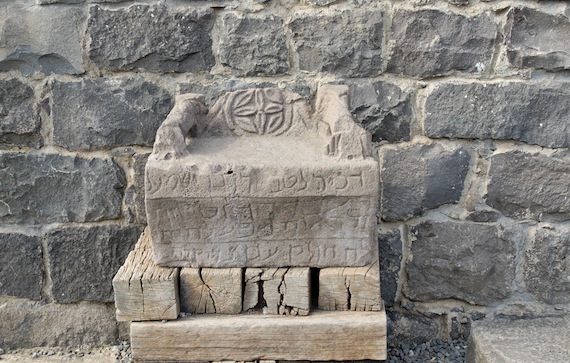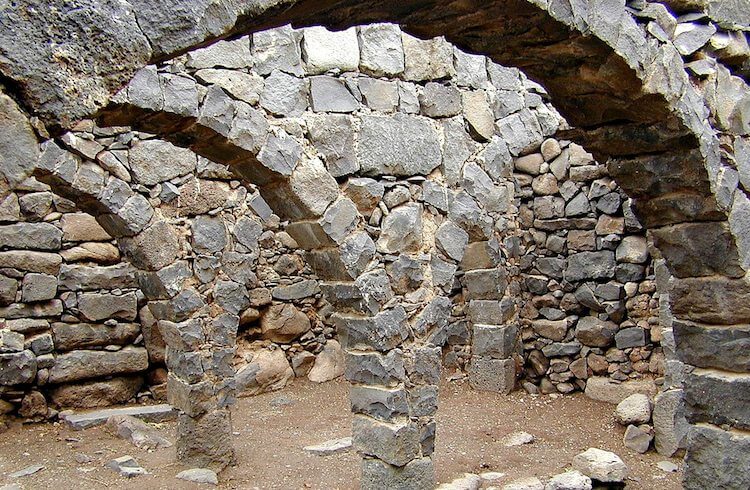Leadership in any form is a place of honor because of one reason only. You won’t see that reason in the world’s system where leadership often stands upside down. A small town in Galilee reminds us how to keep it upright.

(Photo: Chorazin’s ruins hide at center left. Courtesy of Pictorial Library of Bible Lands)
From a distance, Chorazin seems like it’s hiding. I don’t blame it for trying. After all, it remains one of the three cities in Galilee that Jesus rebuked for failing to respond to His message. The basalt ruins of Chorazin appear little more than a pile of rocks among so many thousands of others. Clumps of grass and volcanic rock offer a variegated green and gray to the hillside above the Sea of Galilee.
Unless you look carefully, you may not even see the city.
But Jesus saw it. So should we.
Chorazin holds the nickname, “Capernaum with a view.” The site rests about two miles north of Capernaum and the Sea of Galilee. Its view is indeed lovely.
A Synagogue Found
Like most Galilean cities, Chorazin had a synagogue. But unlike most excavated ruins today, Chorazin’s synagogue has been found.

(Photo: Chorazin synagogue. Courtesy of the Pictorial Library of Bible Lands)
- The remains of the synagogue date to the second century (some suggest it dates to the 4th-century).
- Galilean synagogues typically had three doorways leading from the outer courtyard into the main area.
- The open layout had two rows of pillars that formed three walkways with benches surrounding the walls.
- Likely destroyed by an earthquake, the synagogue’s ruins betray the compromise of carved images, including patterns of animals, flora, and people.
The archaeologist’s spade at Chorazin has unearthed numerous houses near the synagogue and a ritual bath adjoining a sizeable oval cistern.
Sitting Upside Down in the Seat of Moses
In the 1920s, excavators found a decorated stone seat, referred to as, “the Seat of Moses,” which served as the place where an authoritative teacher would sit in the synagogue to read the Torah. The Israel Museum in Jerusalem houses the original seat today, but a replica sits beside the synagogue’s doorway in Chorazin.
Jesus referred to this seat of authority when He said:
The teachers of the law and the Pharisees sit in Moses’ seat. So you must obey them and do everything they tell you. But do not do what they do, for they do not practice what they preach. —Matthew 23:2–4

(“Seat of Moses” found at Chorazin. Courtesy of Pictorial Library of Bible Lands)
Chorazin was one of the three Galilean cities rebuked by Jesus for refusing to respond to His miracles (Luke 10:13-15). All three cities—Chorazin, Bethsaida, and Capernaum—remain in ruins, with only Capernaum revealing any first-century excavations. Bethsaida’s precise location remains debatable.
Chorazin After the Time of Jesus
After Hadrian’s paganizing of Jerusalem in AD 135, Jews flooded into Galilee.
- The ruins we see today in Chorazin date from this century in which the city expanded to more than 80 acres. Both Eusebius and Jerome refer to the site in various states of ruin and reconstruction.
- The fertile volcanic soils surrounding Chorazin yielded an excellent quality of wheat. The Talmud refers to Chorazin’s wheat as worthy of providing the omer, or first fruits offering, but the city’s distance from Jerusalem proved prohibitive (see Menahot, 85a).
- Most Jewish settlements in Galilee suffered greatly following the Arab conquest. But during the Middle Ages (12th– to 14th– centuries), Chorazin enjoyed a revival of reoccupation. A house with impressive arches from this period still stands and provides a fine example of the construction in the medieval period.

(Photo: Chorazin House of Arches. Courtesy of the Pictorial Library of Bible Lands)
Chorazin remains an excellent example of a Galilean city during the Roman period. But spiritually, the city remains a poor example of how to respond to God.
Why Leadership is a Place of Honor
How ironic that a “Seat of Moses” turned up at Chorazin, a city that ignored Moses’ prophecies about the Messiah (Deuteronomy 18:18). It ignored Jesus’ miracles that proved He was the Messiah (Luke 10:13).
- The scribes and Pharisees sat in Moses’ seat—both literally and figuratively. Sitting in the seat represented authority. But the Jewish leaders saw authority as a means for personal honor, power, and acclaim.
- Jesus urged leaders to hold their positions not as a place of personal exaltation. Rather, leaders should view their roles as that of servants, and their attitudes should display genuine humility (Matthew 23:11-12).
The Seat of Moses at Chorazin speaks to those who have in a place of leadership in any capacity—in the church, in the corporate world, or in the home.
Tell me what you think: What’s a good example of leadership you’ve seen? To leave a comment, just click here.
